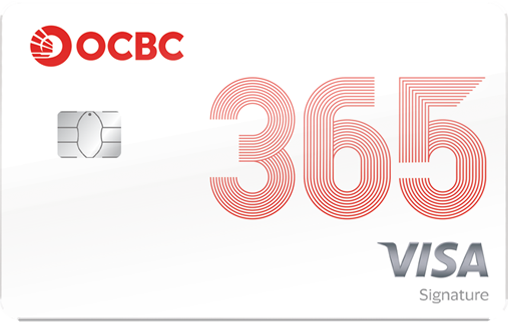Investment outlook for 2024: Soft landing, recession, or rally?
Investment outlook for 2024: Soft landing, recession, or rally?
- Overall, we see a broadly favourable outlook for risk assets in 2024.
- Rate cuts by the Federal Reserve will support financial markets despite global growth slowing.
- Continue to hold more longer-dated bonds, as such bonds usually outperform before a rate cut.
- Any short-term technical correction is an opportunity to dip-buy into quality companies that can withstand the shock of a US recession.
Expectations of potential policy easing by the Federal Reserve was the final boost that markets needed to end 2023 on a spectacular note. US equities were the main beneficiaries of investors’ exuberance, although bonds did not fare too badly either.
The gains are remarkable, considering 2023 started with a financial crisis and predictions for a recession in the US. On a broader scale, geopolitics also hampered investment sentiment. These should serve as a timely reminder for investors to remain nimble to external shocks and position investment portfolios to tap investment opportunities throughout the year. Our market outlook can serve as a guide to make the process less challenging.
Overall, we see a broadly favourable outlook for risk assets in 2024, as rate cuts will support financial markets despite global growth slowing for the third year in a row.
Central banks and policy pivots
Markets may have run ahead of themselves on expectations of a rate cut by the Federal Reserve (Fed). For the data dependent Fed, November’s jobs report showed the US labour market remains firm, while core inflation was well above the central bank’s 2% goal. These gave officials cause to keep the fed funds rate at the 5.25-5.50% range in December 2023.
However, overall data is trending down. Third-quarter personal consumption data came in softer than anticipated, and slightly more US workers applied for unemployment benefits in December. The numbers support the market narrative of a cooling economy that could see interest rate cuts from the Fed.
Despite this, the prospects of early rate cuts in 2024 are slim. The Fed is likely to keep its tightening bias in case inflation remains sticky. We can expect the Federal Reserve to start cutting interest rates only if core inflation falls below 3%, and this could happen by June. It may start reducing interest rates by 25bps per quarter (from June onwards) as the lagged effect of tighter financial conditions work through the economy and consumer resilience.
Consumer spending accounts for about two-thirds of US gross domestic product. There is a possibility that the Fed could succeed in engineering a slowdown in the economy sufficiently enough to conquer high inflation. However, as fiscal policy turns less stimulatory, the US may not be able to avoid a recession. History shows all but five of the Fed tightening cycles since 1950 have ended in a recession.
The US economy may experience a mild recession (~50% likelihood) for two quarters in mid-2024. We expect the negative impact of a mild recession in the US to be more than offset by the positive effects of lower rates on valuations and duration. A mild recession could dent corporate earnings, but earnings growth is likely to be broadly supported in nominal terms.
In a soft-landing scenario (~30% likelihood), the US economy could avoid a recession, while a hard landing (~20% likelihood) could occur if core inflation remains above 3% in 2024, preventing the Fed from cutting rates even as US activity slows. This could result in a deeper recession than our base case.
Elsewhere, we anticipate the Eurozone and UK will only emerge slowly from recession in 2024 while China and Japan are set to slow too in 2024 as exporters face weaker growth, and thus reduced demand abroad.
Falling inflation should allow the European Central Bank (ECB) to start cutting interest rates from its current record level of 4.00% from June 2024 and the Bank of England (BoE) from 5.25% in the second half of next year. But GDP growth will still be only around 0.5% in 2023 and 2024 for both economies.
We think the Bank of Japan (BoJ) will only pivot in April 2024. This is dependent on the annual wage negotiations between enterprise unions and the employers that occur over February and March. If salaries are seen as rising fast enough to let inflation settle around the BoJ’s 2% target, only then can we expect the BoJ to raise its deposit rate to 0.00%. Meanwhile, the dovish stance will keep benefiting Japan’s equities throughout 2024, supported by constructive corporate reforms.
2024: A US presidential election year
We may get some volatility around the time Americans head to the polls in November, but the focus will eventually return to fundamentals as uncertainty fades.
The S&P 500 index during election cycles has demonstrated instances where markets have not only weathered political transitions, but have also shown resilience and provided favourable returns despite the uncertainty. Interestingly, biotech, industrial, and healthcare sectors tend to be favoured under the Democrats, while pharmaceuticals and airlines tend to outperform when Republicans are elected.
How to position your portfolio for 2024
Our conclusion is that the market outlook for 2024 is broadly favourable. An eventual pivot in the Fed’s monetary policy stance in the 2H2024 will benefit risk assets and offer investment opportunities.
1H2024: Market volatility will remain elevated due to uncertainty. It remains uncertain when rates will be cut and by how much. Investors may have been too aggressive in pricing in rate cuts as early as 1Q2024. Disappointment could be in store for bondholders if the cuts do not materialise as expected, leading to a spike in yields. Thus, remain defensive and continue to hold high quality investment grade bonds. More opportunistic investors can consider longer-dated bonds and ride through the volatility in 1H2024 to position for the expected rate cuts in 2H2024.
Continue to be cautious in equities as markets pare back their rate cut expectations. Take advantage of any short-term technical correction in the US to dip-buy into quality companies that can withstand the shock of a recession and benefit once the recovery broadens beyond the Magnificent-7 stocks. Invest into defensive value sectors, such as Healthcare, Consumer Staples and Utilities but keep some exposure to quality growth sectors like Technology.
2H2024: The Fed is expected to begin rate cuts and the resulting lower interest rates will be conducive for bonds, particularly Developed Market Investment Grade bonds and US Treasuries and equities. Equities will likely accelerate and begin to outperform bonds. While the Magnificent-7 stocks would likely be the first to rise, the remaining 493 stocks in the S&P are expected to catch up as the recovery broadens, giving an opportunity for investors to benefit from rotating into the broader US equity market.
A US soft landing scenario will be positive for high yield bonds and more constructive for equities than in the mild recession scenario. Significant market volatility accompanying a hard landing scenario will likely result in downward pressure on both stocks and bonds, like what we saw in 2022, while defensive portfolios will outperform.
Managing expectations against reality
Market movements may not always materialise according to expectations. There are many moving parts on the investment horizon, and any one of it could result in a negative surprise. Hence, investors should not be complacent, but be mindful to invest gradually over the year, rather than attempt to time the market. This would ensure their assets are prudently allocated to insulate portfolios from downturns in any asset or market.
Explore our enhanced Unit Trust journey
In our continuous effort to improve your investment experience, we have enhanced our Unit Trust journey on the OCBC Digital app. Log in to the app to explore our new features such as:
- Curated Fund Collection based on themes and sectors you may be interested in
- Dividend Calculator to know how much potential dividends you can earn through investing in the available funds^
- Expanded Unit Trust options to include over 80 Foreign Currency Denominated Unit Trusts
- Improved data of your investment holdings to include newly added metrics such as history of dividends and past transactions on your Unit Trust holdings#
^Note that dividend information on the active funds will be available for up to 2 years.
For example, if you received dividends in November 2023, the information will only be available until October 2025 and unavailable in November 2025.
#Note that transaction history will be available for up to 2 years.
Important Notes
This advertisement has not been reviewed by the Monetary Authority of Singapore.
- The content in this report is either written by OCBC Wealth Management or a third party commissioned by Oversea-Chinese Banking Corporation Limited (“OCBC Bank”, “us”, “we” or “our”). Some of the contents in this report are summaries of the investment ideas and recommendations set out in research reports disseminated by OCBC Bank and its respective associated and connected corporations ("OCBC Group"). For any interest that OCBC Group might have in the securities and/or issuers of the securities, you may request for a copy of the relevant report from your relationship manager.
- Any opinions or views of third parties expressed in this document are those of the third parties identified, and do not represent views of Oversea-Chinese Banking Corporation Limited.
- This information is intended for general circulation and/or discussion purposes only. It does not consider the specific investment objectives, financial situation or needs of any particular person.
- Before you make an investment, please seek advice from your Relationship Manager regarding the suitability of any investment product taking into account your specific investment objectives, financial situation or particular needs.
- If you choose not to do so, you should consider if the investment product is suitable for you and conduct your own assessments and due diligence on the investment product.
- We are not making an offer, solicit to buy or sell or subscribe for any security or financial instrument, enter into any transaction or participate in any trading or investment strategy with you through this document. Nothing in this document shall be deemed as an offer or solicitation to buy or sell or subscribe for any security or financial instrument or to enter into any transaction or to participate in any particular trading or investment strategy.
- No representation or warranty whatsoever in respect of any information provided herein is given by OCBC Bank and it should not be relied upon as such. OCBC Bank does not undertake an obligation to update the information or to correct any inaccuracy that may become apparent at a later time. All information presented is subject to change without notice.
- OCBC Bank shall not be responsible or liable for any loss or damage whatsoever arising directly or indirectly howsoever in connection with or as a result of any person acting on any information provided herein.
- Investments are subject to investment risks, including the possible loss of the principal amount invested. The information provided herein may contain projections or other forward-looking statements regarding future events or future performance of countries, assets, markets or companies. Actual events or results may differ materially. Past performance figures, predictions or projections are not necessarily indicative of future or likely performance.
- Any reference to a company, financial product or asset class is used for illustrative purposes and does not represent our recommendation in any way.
- The information in and contents of this document may not be reproduced or disseminated in whole or in part without OCBC Bank’s written consent.
- OCBC Bank, its related companies, and their respective directors and/or employees (collectively “Related Persons”) may, or might have in the future, interests in the investment products or the issuers mentioned herein. Such interests include effecting transactions in such investment products, and providing broking, investment banking and other financial services to such issuers. OCBC Bank and its Related Persons may also be related to, and receive fees from, providers of such investment products.
- You must read the Offer Document/Indicative Term Sheet/Product Highlight Sheet before deciding whether or not to purchase the investment product, copies of which may be obtained from your relationship manager.
- Any hyperlink to any third party article, or other website or webpage (including any websites or webpages owned, operated and maintained by third parties) is for informational purposes and for your convenience only and is not an endorsement or verification of any such article, website or webpage by OCBC Bank and should only be accessed at your own risk. OCBC Bank does not review the contents of any such articles, website or webpage, and shall not be liable to any person for the same.
- Investors should note that there are necessarily limitations and difficulties in using any graph, chart, formula or other device to determine whether or not, or if so, when to, make an investment.
- Where the contents have not been identified as summaries of the investment ideas and recommendations set out in research reports disseminated by the OCBC Group, the information is not intended to constitute research analysis or recommendation and should not be treated as such.
Collective Investment Schemes
- A copy of the prospectus of each fund is available and may be obtained from the fund manager or any of its approved distributors. Potential investors should read the prospectus for details on the relevant fund before deciding whether to subscribe for, or purchase units in the fund.
- The value of the units in the funds and the income accruing to the units, if any, may fall or rise. Please refer to the prospectus of the relevant fund for the name of the fund manager and the investment objectives of the fund.
- Investment involves risks. Past performance figures do not reflect future performance.
- Any reference to a company, financial product or asset class is used for illustrative purposes and does not represent our recommendation in any way.
- For funds that are listed on an approved exchange, investors cannot redeem their units of those funds with the manager, or may only redeem units with the manager under certain specified conditions. The listing of the units of those funds on any approved exchange does not guarantee a liquid market for the units.
- The indicative distribution rate may not be achieved and is not an indication, forecast, or projection of the future performance of the Fund.
Foreign Currency
- Foreign currency investments or deposits are subject to inherent exchange rate fluctuation that may provide opportunities and risks. Consequently, exchange rate fluctuations may affect the value of your foreign currency investments or deposits.
- Earnings on foreign currency investments or deposits may change depending on the exchange rates prevalent at the time of their at maturity if you choose to convert.
- Exchange controls may apply to certain foreign currencies from time to time.
- Any pre-termination costs will be taken and deducted from your deposit directly and without notice.
Dual Currency Returns
By buying Dual Currency Returns, you are giving us the right to repay you at a future date in a different currency from the currency in which you made your original investment, even if you would prefer not to be paid in this currency at that time. Dual Currency Returns are affected by foreign exchange rates, which may affect how much you get back from your investment. You may receive less than you originally invested.
- Foreign exchange control restrictions may apply to the foreign currencies linked to your Dual Currency Returns. As a result, we may repay your investment and interest in a different currency. You may receive less than you originally invested when the amount of this different currency is converted back to the base currency (the currency you originally invested). You may be able to get information on foreign exchange control restrictions, if any, for each foreign currency offered in relation to Dual Currency Returns, from the relevant monetary, regulatory or other governmental authorities for that currency.
- We will not end Dual Currency Returns before the maturity date (the date they are due to end). You may, however, withdraw the amount you originally invested before the maturity date. If you do this, please remember that you will have to pay any charges that apply, which are calculated based on the amount of the time remaining before maturity date, as well as current market conditions relating to strike prices, foreign exchange rates and changes in the underlying foreign exchange pair. These charges may mean that you get back much less than you originally invested. Please feel free to approach your Relationship Manager for details of the procedures and charges that apply if you withdraw your Dual Currency Returns investment before the maturity date.
- Dual Currency Returns are not insured deposits for the purposes of the Deposit Insurance and Policy Owners’ Protection Schemes Act of Singapore.
Global Equities Disclaimer
- Dividend growth is not guaranteed, nor are companies in which you invest obliged to pay dividends.
- Companies may go bankrupt, rendering the original investment valueless.
- Equity markets may decline in value.
- Corporate earnings and financial markets may be volatile.
- If there is no recognised market for equities, then these may be difficult to sell and accurate information about their value may be hard to obtain.
- Smaller company investments may be difficult to sell if there is little liquidity in the market for such equities and there may be substantial differences between the buying price and the selling price.
- Equities on overseas markets may involve different risks to equities issued in Singapore.
With regards to investments in overseas companies, foreign exchange rates may move in an unfavourable direction affecting adversely the valuation of investments in base currency terms.
Cross-Border Marketing Disclaimer
General: The document provided by Oversea-Chinese Banking Corporation Limited, Singapore (“OCBC Singapore”) is for general information only and is not intended for anyone other than the recipient. It does not take into account the specific investment objectives, financial situation or particular needs of any particular person, and does not constitute an offer or solicitation by OCBC Singapore to buy or sell or subscribe for any security or financial instrument or to enter into a transaction or to participate in any particular trading or investment strategy nor an advice or a recommendation with respect to such financial products. This document may not be published, circulated, reproduced or distributed in whole or in part to any other person without OCBC Singapore’s prior written consent. This document is not intended for distribution to, publication or use by any person in any jurisdiction, where such distribution, publication or use would be contrary to applicable law or would subject OCBC Singapore and its related corporations, connected persons, associated persons and/or affiliates to any registration, licensing or other requirements within such jurisdiction.
Brunei: This document has not been delivered to, licensed or permitted by the Autoriti Monetari Brunei Darussalam, the authority as designated under the Brunei Darussalam Securities Markets Order, 2013 and the Banking Order, 2006; nor has it been registered with the Registrar of Companies, Registrar of International Business Companies or the Brunei Darussalam Ministry of Finance. The products are not registered, licensed or permitted by the Autoriti Monetari Brunei Darussalam or by any other government agency or under any law in Brunei Darussalam. Any offers, acceptances, sales and allotments of the products shall be made outside Brunei Darussalam.
Indonesia: The offering of the investment product in reliance of this document is not registered under the Indonesian Capital Market Law and its implementing regulations, and is not intended to constitute a public offering of securities under the Indonesian Capital Market Law and its implementing regulations. According, this investment product may not be offered or sold, directly or indirectly, within Indonesia or to Indonesian citizens (wherever they are domiciled or located), entities or residents, in any manner which constitutes a public offering of securities under the Indonesian Capital Market Law and its implementing regulations. In compliance with the Indonesian Capital Market Law and Regulation of the Indonesian Financial Service Authority No. 30/POJK.04/2019, the investment product in this document may not be distributed in Indonesian or to any Indonesian citizens (wherever they are domiciled or located), entities or residents. The investment product in this document has not been and will not be registered or filed with to the Indonesian Financial Service Authority. Japan: The information contained in this document is for general reference purposes only. It does not have regard to your specific investment objectives, financial situation, risk tolerance and particular needs. Nothing in this document constitutes an offer to buy or sell or an invitation to offer to buy or sell or a recommendation or a solicitation to buy or sell any securities or investment. You acknowledge that nothing in this document constitutes investment or financial advice or any advice of any nature.
Malaysia: OCBC Singapore does not hold any licence, registration or approval to carry on any regulated business in Malaysia (including but not limited to any businesses regulated under the Capital Markets & Services Act 2007 of Malaysia), nor does it hold itself out as carrying on or purport to carry on any such business in Malaysia. Any services provided by OCBC Singapore to residents of Malaysia are provided solely on an offshore basis from outside Malaysia, either as a result of “reverse enquiry” on the part of the Malaysian residents or where OCBC Singapore has been retained outside Malaysia to provide such services. As an integral part of the provision of such services from outside Malaysia, OCBC Singapore may from time to time make available to such residents documents and information making reference to capital markets products (for example, in connection with the provision of fund management or investment advisory services outside of Malaysia). Nothing in such documents or information is intended to be construed as or constitute the making available of, or an offer or invitation to subscribe for or purchase any such capital markets product.
Myanmar: The provision of any products and services by OCBC Singapore shall be solely on an offshore basis. You shall ensure that you have and will continue to be fully compliant with all applicable laws in Myanmar when entering into discussion or contracts with OCBC Singapore.
Oman: This document does not constitute a public offer of investment, securities or financial services in the Sultanate of Oman, as contemplated by the Commercial Companies Law of Oman (Royal Decree No. 184/2019), Banking Law of Oman (Royal Decree No. 114/2000) or the Capital Market Law of Oman (Royal Decree No. 80/1998) and the Executive Regulations of the Capital Market Law (Ministerial Decision No. 1/2009) or an offer to sell or the solicitation of any offer to buy non-Omani investment products, securities or financial services and products in the Sultanate of Oman. It is being provided to a limited number of sophisticated investors solely to enable them to decide whether or not to make an offer to invest in financial products mentioned in this document, outside of the Sultanate of Oman, upon the terms and subject to the restrictions set out herein and may not be reproduced or used for any other purpose or provided to any person other than the original recipient. Additionally, this document is not intended to lead to the making of any contract within the territory or under the laws of the Sultanate of Oman. The Capital Market Authority of Oman and the Central Bank of Oman take no responsibility for the accuracy of the statements and information contained in this document or for the performance of the financial products mentioned in this document nor shall they have any liability to any person for damage or loss resulting from reliance on any statement or information contained herein.
Russia: The investment products mentioned in this document have not been registered with or approved by the local regulator of any country and are not publicly distributed in Singapore or elsewhere. This document does not constitute or form part of an offer or invitation to the public in any country to subscribe for the products referred to herein.
Taiwan: The provision of the information and the offer of the service concerned herewith have not been and will not be registered with the Financial Supervisory Commission of Taiwan pursuant to relevant laws and regulations of Taiwan and may not be provided or offered in Taiwan or in circumstances which requires a prior registration or approval of the Financial Supervisory Commission of Taiwan. No person or entity in Taiwan has been authorised to provide the information and to offer the service in Taiwan.
Thailand: Please note that none of the material and information contained, or the relevant securities or products specified herein is approved or registered in Thailand. Interests in the relevant securities or products may not be offered or sold within Thailand. The attached information has been provided at your request for informational purposes only and shall not be copied or redistributed to any other person without the prior consent of OCBC Singapore or its relevant entities and in no way constitutes an offer, solicitation, advertisement or advice of, or in relation to, the relevant securities or products by OCBC Singapore or any other entities in OCBC Singapore’s group in Thailand.
The Philippines: The information contained in this document is not intended to constitute a public offering of securities under the Securities Regulation Code of the Philippines.
Dubai International Financial Center (DIFC): OCBC Singapore is not a financial institution licensed in the Dubai International Financial Centre ("DIFC") or the United Arab Emirates outside of the DIFC and does not undertake banking or financial activities in the DIFC or the United Arab Emirates nor is it licensed to do so. United Kingdom: In the United Kingdom, this document is being made available only to the person or the entity to whom it is directed being persons to whom it may lawfully be directed under applicable laws and regulations of the United Kingdom (such persons are hereinafter referred to as ‘relevant persons’). Accordingly, this document is communicated only to relevant persons. Persons who are not relevant persons must not act on or rely on this document or any of its contents. Any investment or investment activity to which this document relates is available only to relevant persons and will be engaged in only with relevant persons. Relevant persons in receipt of this document must not distribute, publish, reproduce, or disclose this document (in whole or in part) to any person who is not a relevant person. The deposits referred to in this communication are maintained with Oversea-Chinese Banking Corporation Limited, Singapore (“OCBC Singapore”). OCBC Singapore is incorporated in Singapore and is authorised and regulated by the Monetary Authority of Singapore. Certain deposits offered by OCBC Singapore are covered by the Singapore Deposit Insurance Scheme, subjected to conditions. The bank’s paid up capital and reserves exceeds SGD 1.5 billion – further information about the capital position of OCBC Singapore may be found at OCBC Bank's website: > OCBC Group > Investors > Annual report and AGM.
United Arab Emirates (UAE): The offering of certain products in this document has not been and will not be registered with the Central Bank of United Arab Emirates or Securities & Commodities Authority in the United Arab Emirates. Any products in this document that are being offered or sold do not constitute a public offering or distribution of securities under the applicable laws and regulations of the United Arab Emirates. This document is not intended for circulation or distribution in or into the UAE, other than to persons in the UAE to whom such circulation or distribution is permitted by, or is exempt from the requirements of, the applicable laws and regulations of the United Arab Emirates. The distribution of the information contained herein by the recipient is prohibited. Where applicable, this document relates to securities which are listed outside of the Abu Dhabi Securities Exchange and the Dubai Financial Market. OCBC Singapore is not authorised to provide investment research regarding securities listed on the exchanges of the United Arab Emirates.
United States of America: This product may not be sold or offered within the United States or to US persons.









